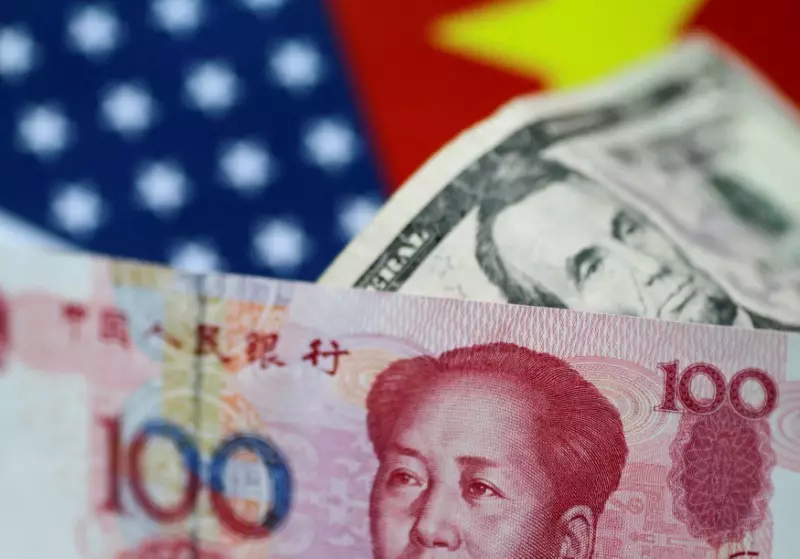In the dynamic world of Asian currencies, Thursday’s trading reflected a cautious atmosphere as many currencies exhibited a muted response to external economic signals. The looming prospect of restrained U.S. interest rate cuts in 2025 has created a climate of uncertainty, causing traders to tread lightly in regional markets. The sluggish trading environment is particularly notable as many major markets, including Japan, were closed in observance of the New Year holidays, further dampening market activity.
Among the currencies feeling the strain was the Chinese yuan, which demonstrated notable weakness during the trading session. Recent data from the purchasing managers’ index (PMI) indicated that the manufacturing sector in China is struggling to sustain momentum, raising alarms about the sustainability of the country’s economic recovery amidst dwindling support from the government’s stimulus measures. Specifically, the yuan depreciated against the dollar, with the USD/CNY exchange rate climbing to 7.3190 yuan, marking the highest level seen in more than a year. Such a shift highlights growing concerns over China’s economic trajectory, particularly in the wake of recent government data that also revealed disappointing growth in the manufacturing sector.
On a broader scale, the U.S. dollar maintained its robust position throughout the trading day, buoyed by expectations of a more gradual approach to interest rate cuts by the Federal Reserve in the upcoming year. Simultaneously, the potential for increased protectionist policies introduced by the incoming U.S. administration under President Donald Trump was seen as a further catalyst for dollar strength. The dollar index held steady, reflecting a robust market sentiment as traders remain wary of the potential implications these policies might have on global trade dynamics.
Asia’s economic landscape shows a complex interplay of variables affecting currency values. Currencies across the region often mirror the performance of the Chinese yuan, especially in times of economic uncertainty. Recent trends reveal that the Japanese yen has been particularly susceptible, with market forecasts suggesting continued pressure due to a dovish outlook from the Bank of Japan. The USD/JPY rate remained relatively flat but had touched a staggering five-month high, indicating persistent weakness in the yen as traders react to an anticipated slow path of monetary easing.
Furthermore, the South Korean won, which has also faced significant challenges in 2024, managed a small recovery on Thursday. However, its annual performance has been less than stellar, with the USD/KRW exchange rate surging nearly 15% attributable to political instability and economic uncertainties. This reflects broader sentiments in the region regarding the effect of domestic issues on currency fluctuations.
Contrastingly, the Singapore dollar displayed some resilience, experiencing a slight dip of 0.2% against the dollar as it benefited from optimistic GDP growth figures for 2024, which surpassed expectations at 4%. However, the fourth quarter’s slowdown has cast a shadow over the outlook for Singapore’s economy, making future growth forecasts a matter of concern.
The Australian dollar rebounded slightly, rising 0.5% after sliding to its lowest point in over a year. Meanwhile, the Indian rupee showed some vulnerability, dropping by 0.3% after recently hitting a historic low against the dollar. This fluctuation can be viewed as a response to shifts in investor sentiment and ongoing volatility in the global financial landscape.
As Asian currencies continue to navigate the challenging terrain shaped by external economic factors and regional dynamics, traders remain cautious. The interplay of U.S. monetary policy and regional economic data will undoubtedly influence currency performance moving forward. The slow yet steady path toward rate adjustments in the U.S. has left many market participants in a holding pattern, highlighting the delicate balance between fostering economic growth and mitigating the risks associated with changing global economic conditions.

